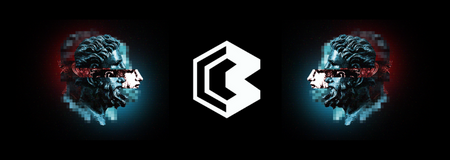What’s an NFT?
What are NFTs, and how are they disrupting the art world?
What are NFT’s anyway?
Non-fungible tokens (NFTs) are blockchain-based tokens that can be linked to anything from digital art to physical assets. The core attributes of these tokens give them unique value and categorically separate them from other types of assets. These properties include being verifiably unique, and indivisible. The transparent nature of the underlying code means that the scarcity and ownership of any given token are verifiable without the need of a trusted intermediary.
Underlying tech
NFTs are made possible by smart-contract-enabled blockchains. The first platform to support non-fungible assets was Ethereum’s ERC-721 standard. This tech was adopted earliest by CryptoPunks and popularized by CryptoKitties in 2017. Other platforms are emerging with NFT support, including FLOW, EOS, NEO, and TRON.
Blockchain has been steadily disrupting sectors across nearly every category. We view the emergence of NFTs as a continuation of a paradigm shift from centralized to decentralized systems. Let’s delve into the mechanisms that allow NFTs to unlock fresh business models for the creators of both digital and physical collectibles.
Cryptokitties was one of the first widely known NFT projects when it launched in 2017. This dApp was originally built on the Ethereum blockchain. It has since migrated to its own smart contract protocol, Flow. Through this dApp, players collect, breed, and trade digital Kitties. Each Kitty represents a unique NFT that lives on a blockchain. The underlying token for each Kitty encodes a unique genome that defines its appearance, traits, and hereditary linage. CryptoKitties cannot be replicated and cannot be transferred without the user’s permission. The company behind Cryptokitties, Dapper Labs, has generated nearly $100 million in NFT sales so far. In February 2021, Dapper Labs announced that it was raising $250 million at $2 billion valuation.
NFTs can be linked to assets from diverse categories of collectibles — from virtual pets like Cryptokitties, to 3D artwork, to digital football trading cards. All around the world, thriving markets are rapidly evolving centered on highly sought-after assets. Through digital collectibles markets like OpenSea and SuperRare, creators, collectors, and traders meet to purchase and sell assets. Speculation, scarcity, supply, demand, and desirability are all factors that determine the value of pieces. Similar to traditional collectibles (like original Pokeman cards, Beanie Babies, and Picasso paintings), an NFT is worth as much as anyone is willing to pay for it.
Let’s explore some impressive valuations being set by early adopters in this niche.
- $21,350: for a digital artwork created by 17 y/o artist Fewocious
- $47,500: for a tokenized video clip of a LeBron James dunk highlight
- $65,000: for a Sorare trading card representing footballer Kylian Mbappé
- $777,777: for a portfolio of work by digital artist Beeple
- $9,000,000: for a collection of 16,000 pieces of NFT art on the Hashmasks platform
Most NFTs currently in existence are tied to one-of-a-kind digital collectibles, however the potential scope for this technology is vast.
